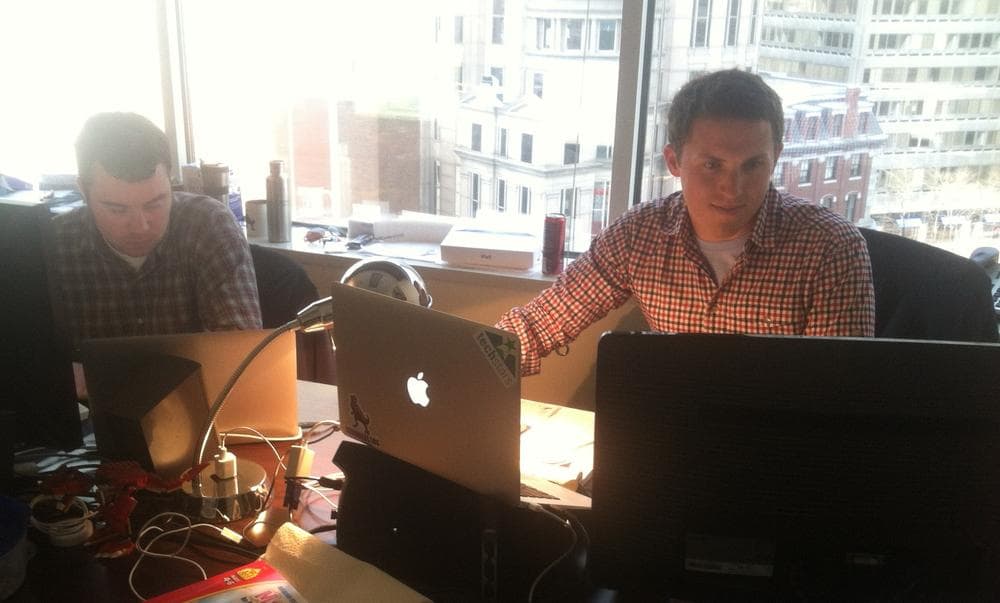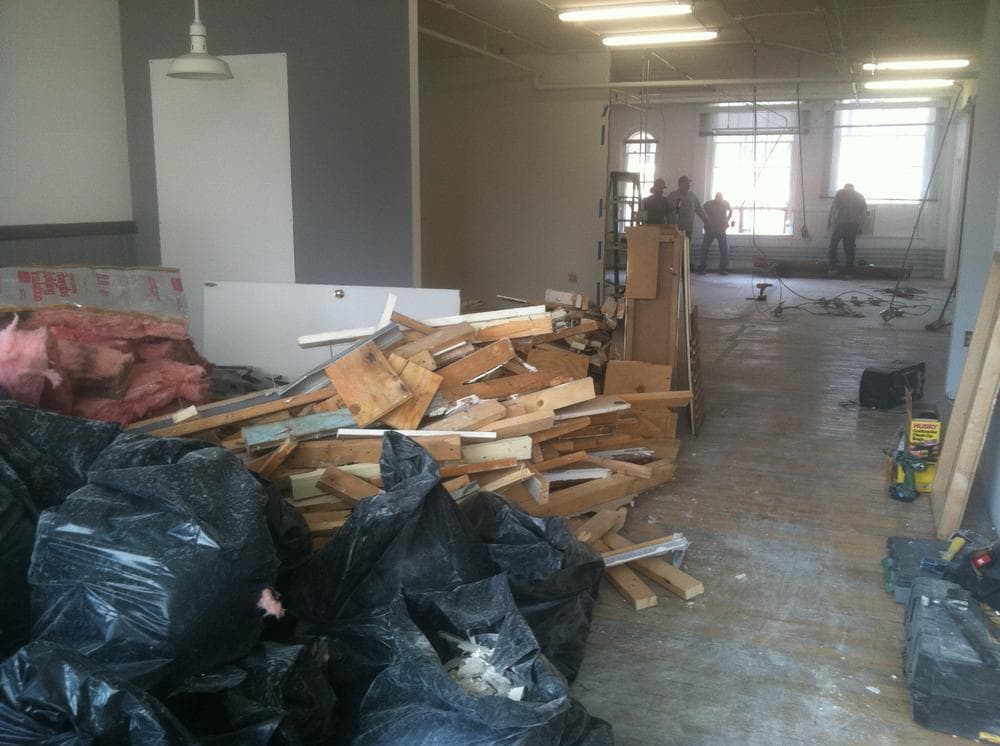Advertisement
Red Line Developing Into Innovation Corridor
Resume[asset title="The Red Line: A Startup At Every Stop" width="624" align=""]2012/wbur_0412_redline[/asset]
BOSTON — Remember how Route 128 used to be known as America's Technology Highway? Well perhaps now there's America's Technology Subway.
The Red Line. It's what Denny Swindle takes to work in the morning. He lives in Cambridge and gets on at the Kendall/MIT stop. He steps off at the Broadway stop.
"This stop is really nice because you have all this architecture, like this old church," Swindle says on the 10-minute walk to his office. "You know, I’m still new here, but I believe Dorchester’s over in this area."
Swindle moved to this city less than a year ago from Nashville. To get to his office in the South End, his walk takes him under the Expressway. He also crosses a bridge with a great view of the looming Prudential Tower.
"It’s kind of gross down below us," he says of the railroad tracks beneath the bridge. "But with a nice Boston backdrop, you kind of ignore all that."
Into this Boston backdrop Swindle brought his small Internet startup called Help Scout. It works out of a converted industrial building on Harrison Avenue. Brick and hip. Eight other small companies share the same space and many of the workers get here the same way.
"The Red Line is important," says Jennifer Fremont-Smith, the CEO of one of the other startups called Smarterer.
"And that’s because a lot of the people that we hire and that I think work in companies of this stage are people who live in Somerville and Cambridge. Or Back Bay. They kind of live in this line."
Startups are practically stringing themselves along the Red Line. They’re finding cheap space around Alewife. They’re moving into empty offices in downtown Boston. Probably the biggest cluster outside of Kendall Square is the Seaport District.
Inside a big industrial building, 14 companies — mostly out of MIT — are working on clean energy solutions. One of the startups is Altaeros Energies. It's making a floating wind turbine designed to generate electricity at 2,000 feet up in the air, where it’s really windy.

"We really did love Cambridge, but we found we were priced out," says Jason Hanna. He's the managing director of this industrial workspace called Greentown Labs. When he was looking for space, Kendall Square was up to five times as expensive as the Seaport District.
"And we looked over here and the building stock and location was nearly as good," Hanna says. "Access to the Red Line, we knew, was going to be key if we wanted to pull engineers back over from Cambridge. We said, 'South Station’s perfect. If it’s walking distance, that’s really fantastic.' "
A lot of other young companies have come to the same conclusion about the neighborhood that the City of Boston has branded as the Innovation District. Same goes for the other side of Fort Point Channel.
Cort Johnson runs a Web development company called Terrible Labs. Started less than a year ago, it’s already outgrowing its single-room sublet at One Financial Center.
"We started as three guys, and now we’re five guys in a room," Johnson says. "Our sixth and seventh guy, if they were here, we’d have a really tough time working together. You get to know people pretty well sitting in a space this size!"
Terrible Labs needed to find a bigger office. Johnson used to work in Cambridge. He thought about moving the startup to Kendall Square.
"It’s a cool environment," Johnson admits. "But it feels a little bit more corporate-y. And even though we’re on the edge of the Financial District, there are a lot of startups here. The energy, and the grittiness, there’s a lot of activity going on."

So Johnson found a cool space for his fast-growing company right across the street in the Leather District.
The other day he dropped in to see the workers he hired to tear out the walls and cubicles left behind by the last tenants. Terrible Labs wants an open floor plan to make it easier to collaborate and innovate. Cort Johnson saw the light streaming through the old window, cutting all the way across the floor.
"More and more companies are moving this way," he said with a smile spreading across his face. "So we’re really excited to be here sort of at the beginning of this."
The best part about new the digs? The building has a manual elevator. The kind with the accordion door and a throttle you move forward and back to take you up and down.
It's a long way from the synthetic beeps of a corporate elevator. We’re not in Kendall anymore.
This program aired on April 13, 2012.
